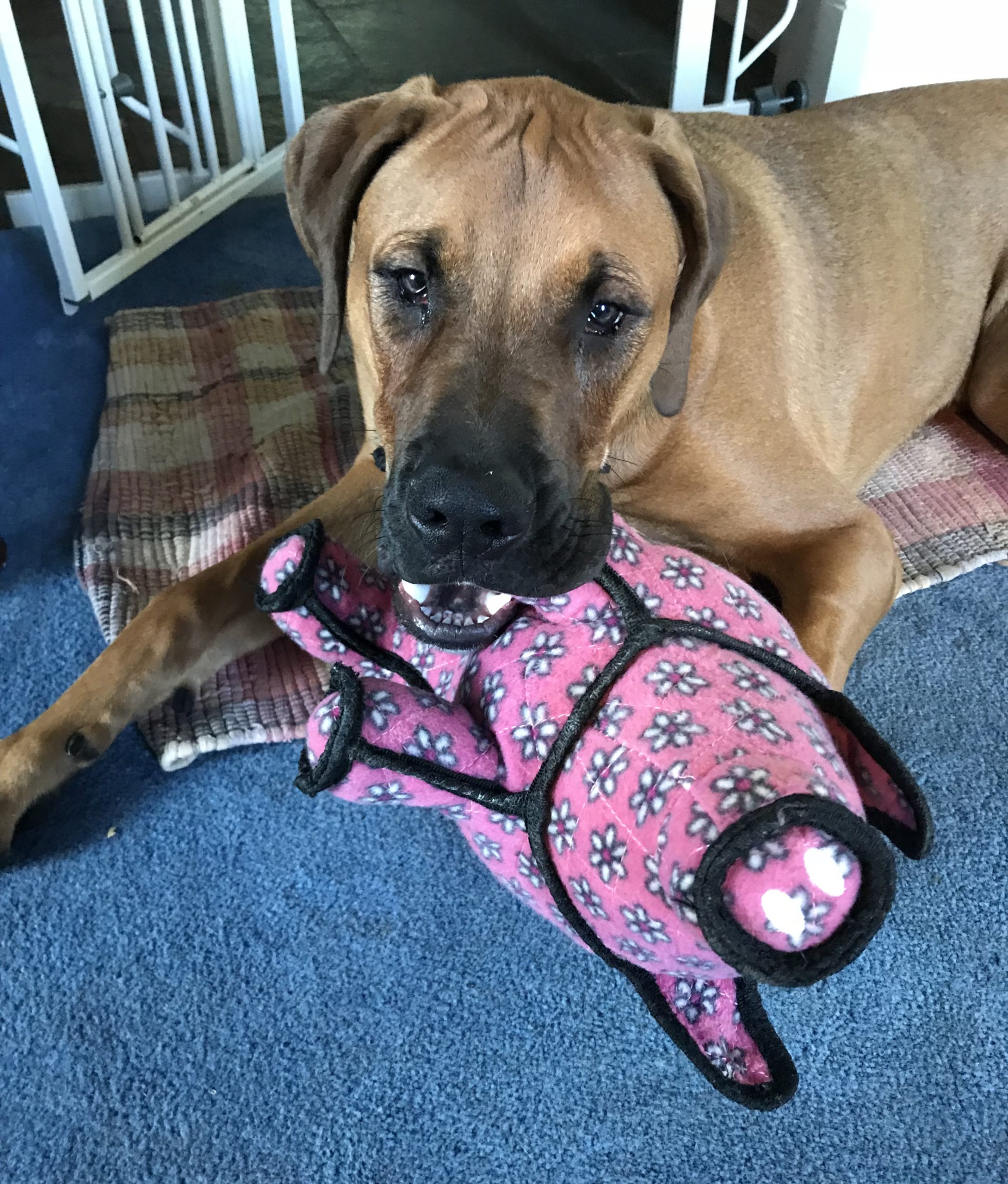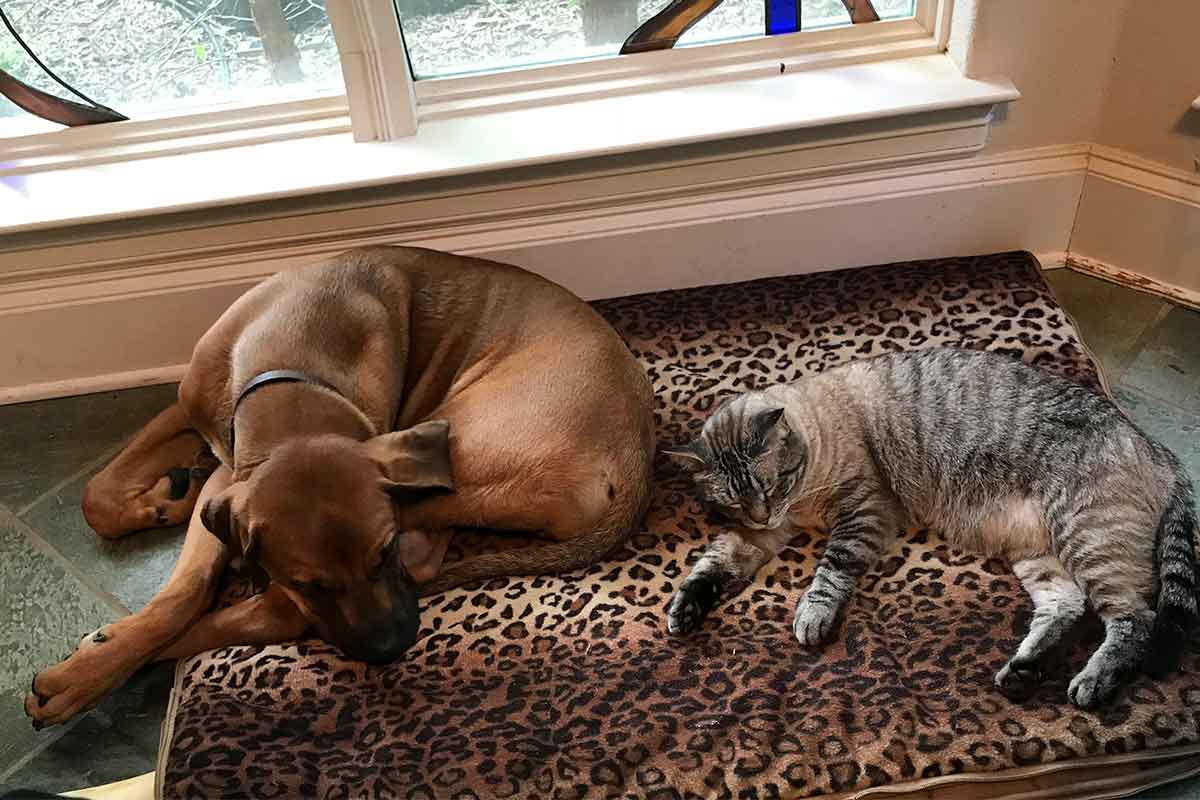Last fall, my husband and I lost our 11-year-old German Shepherd Magical-Dawg in September, and Seren-Kitty in December just shy of her 22nd birthday. The sadness ambushed our emotions for weeks and months. It also haunted Karma-Kat, and he slept with Magic’s collar for a week between bouts of crying, increased clawing, and other attention-seeking behavior.
We wanted another pet, and my husband specifically wanted a puppy. After more than a decade with only adult pets, we took pains to prepare for the arrival and integration of a new baby dog. In April we welcomed a Bullmastiff puppy into our home. These are the three puppy-proofing steps we took to keep puppy and kitty stress low and the whole family happy and safe.
Territory
Bravo arrived weighing 39 pounds at 12 weeks of age. He’d spent all his life outside with seven adult dogs (including his mother), seven siblings, and two cats. They’d already taught him pretty good dog and cat manners, thank goodness, but we still needed to control Bravo’s territory.
Pet gates in the kitchen created a “puppy central” home base for Bravo. The gates also have smaller “cat doors” in the bottom of the barrier, so that Karma continued to have access to the area (but puppy and cat are never left unsupervised).
Slate floor in the kitchen proved easier to clean after puppy accidents.
Private dining in the adjoining laundry room gives Bravo privacy to eat away from thieving cat paws.
Karma, our cat, continues to have free access to the rest of the house, and especially the master bedroom where he’s fed, and the bathroom, where his litter box is located. In the evenings when all eyes can watch the pup, we all spend time together in the living room. Using a strap barrier product (The Door Buddy) gives Karma-Kat access through the bedroom door but prevents Bravo from entering.
Finally, the three cat trees we have for Karma give him elevated territory out of puppy nose-poke range. He can easily escape to safety, if need be, and lounge without stress in the same room as a rowdy dog baby.
Toothy Targets
Puppies chew. It’s in the puppy bill of rights. When puppy proofing, anything at puppy tooth level becomes a potential target. I recommend investing in knee pads and crawling around your house to get a puppy-eye-view of danger zones. Since we’ve lived with dogs and cats for so long (cats chew, too!), most of our dangerous items were already out of harm’s way.
We rolled up door mats and stored them, along with large accent pillows. Otherwise, Bravo turned them into chew toys. We stowed storage boxes behind closed doors. After we learned Bravo could reach countertops and shred mail, we found a new place to store bills.
Cat toys were relegated to Karma’s domain to prevent Bravo from eating catnip mice or sparkle balls. My husband’s socks proved irresistible, and despite our best efforts, the pup has at least twice eaten (and urped up) whole socks.

Toys
Providing Bravo with lots of toys helps to keep him excited and happily focused on legal targets rather than dragging his bed around the house. He’s now six months old and 70 pounds, and his toy preference has changed along the way. Small soft plushies he snuggled with a month ago now end up gutted with stuffing all over the floor. These days, Bravo prefers more rigid chewies, so we provide him with lots of puzzle toys that offer treats when he “wins” the game. His favorite is the Kong Wobbler, which I use to feed him one of his meals.
A new puppy turns people into much better housekeepers. Bravo finds new toys everywhere, so bathroom doors now stay latched to prevent toilet paper theft, toilet lids stay lowered to prevent bob-the-toy games, and books or other paper are stored high up or behind solid doors. Predicting problems helps prevent – and reduce – potential stress, so that we can concentrate on the tail-wagging smiles Bravo brings.
This article was reviewed/edited by board-certified veterinary behaviorist Dr. Kenneth Martin and/or veterinary technician specialist in behavior Debbie Martin, LVT.








